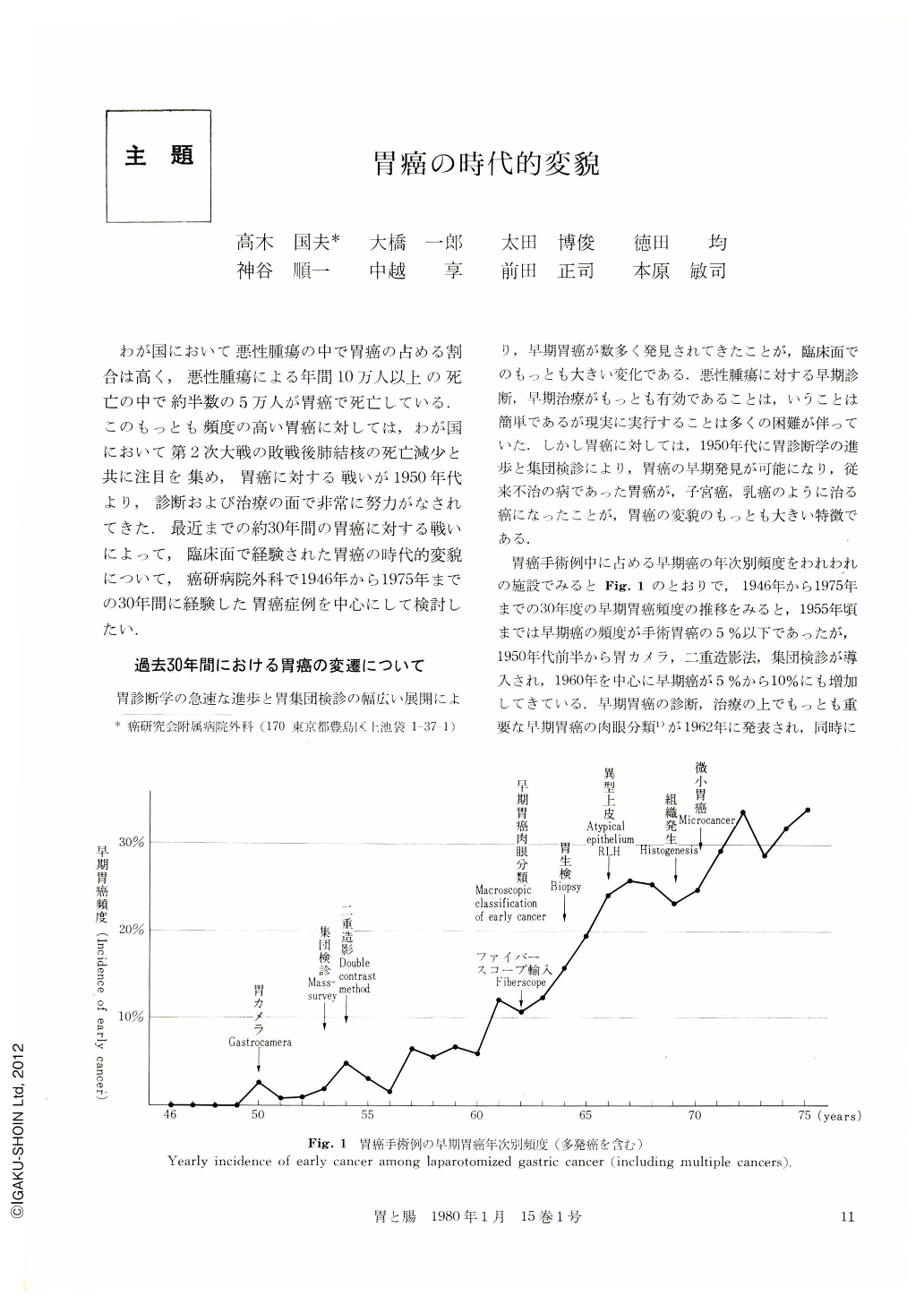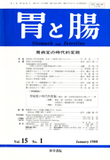Japanese
English
- 有料閲覧
- Abstract 文献概要
- 1ページ目 Look Inside
- サイト内被引用 Cited by
わが国において悪性腫瘍の中で胃癌の占める割合は高く,悪性腫瘍による年間10万人以上の死亡の中で約半数の5万人が胃癌で死亡している.このもっとも頻度の高い胃癌に対しては,わが国において第2次大戦の敗戦後肺結核の死亡減少と共に注目を集め,胃癌に対する戦いが1950年代より,診断および治療の面で非常に努力がなされてきた.最近までの約30年間の胃癌に対する戦いによって,臨床面で経験された胃癌の時代的変貌について,癌研病院外科で1946年から1975年までの30年間に経験した胃癌症例を中心にして検討したい.
More than 30 years have been passed since the World War Ⅱ, we discussed historical transfiguration in gastric cancer for over the last 30 years by analyzing cases which were operated on at the Cancer Institute Hospital.
Among the historical transfiguration in gastric cancer, the most prominent feature was increased rate of early gastric cancer and in fact, its rate currently has been more than 30% of all the operated gastric cancer. This clearly indicates that early diagnosis of the gastric cancer become possible and it certainly is the most important thing to improve the therapeutic results of the gastric cancer.
Another prominent feature was the peak of agedistribution in gastric cancer shifted from 50's to 60's and furthermore, the age group over 70's became more than 10%. We should keep in our mind that the above fact has become very important point from clinical and especially therapeutic aspects. Regarding localization of advanced gastric cancer, its frequency has increased in middle and proximal part of the stomach, and decreased in the distal part of the stomach. Particularly the proximal part of the stomach has become the frequent site of advanced gastric cancer, however there is no such feature in the early gastric cancer. Therefore, we should make a more effort to mal-; e an early diagnosis of the proximal gastric cancer. In regard to macroscopic classification of gastric cancer, there were increased type 5 gastric cancer which could not be categorized by Borrmann's classification. This phenomenon was due to increased number of advanced gastric cancer simulating to early gastric cancer, and this is the important subject to study a relationship between early and advanced gastric cancer from now on. Regarding stage of advanced gastric cancer, stage Ⅲ and Ⅳ were still prominent, but their therapeutic results have improved 8%.

Copyright © 1980, Igaku-Shoin Ltd. All rights reserved.


